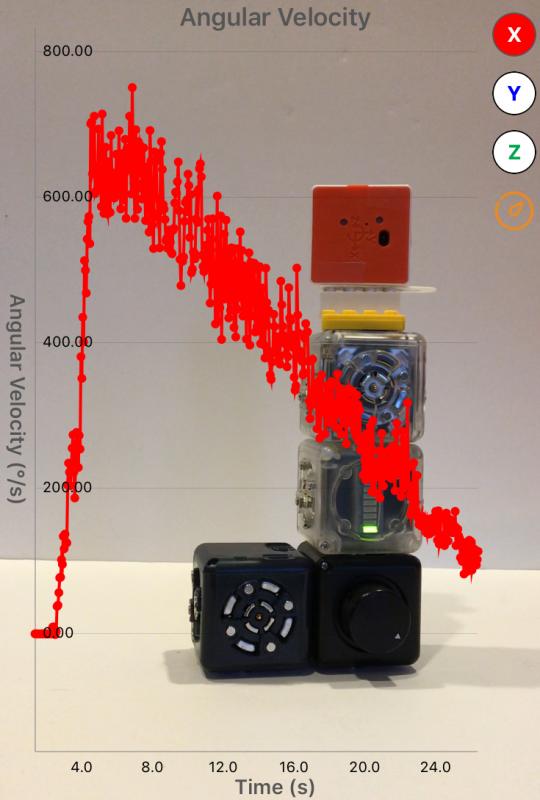Sensor-based inquiry is a dominant force in today’s science education, with the calibration of sensors being essential for high-quality measurement. Wikipedia® defines calibration as “the comparison of measurement values delivered by a device under test with those of a calibration standard of known accuracy.” In this lesson students will study the process of calibration:
- By comparing bars on a Cubelet BARGRAPH block and the resultant angular velocity of a Cubelet ROTATE block with those of the PocketLab Voyager’s Gyroscope as the standard of known accuracy. (Calibrate the number of lighted bars to the angular velocity of the ROTATE block in ᵒ/s.)
- By comparing bars on a Cubelet BARGRAPH block and the resultant light intensity of a Cubelet FLASHLIGHT block with those of the PocketLab Voyager’s Light Sensor as the standard of known accuracy. (Calibrate the number of lighted bars to the light intensity of the FLASHLIGHT block in Lux.)

Grade Level
Lesson links
